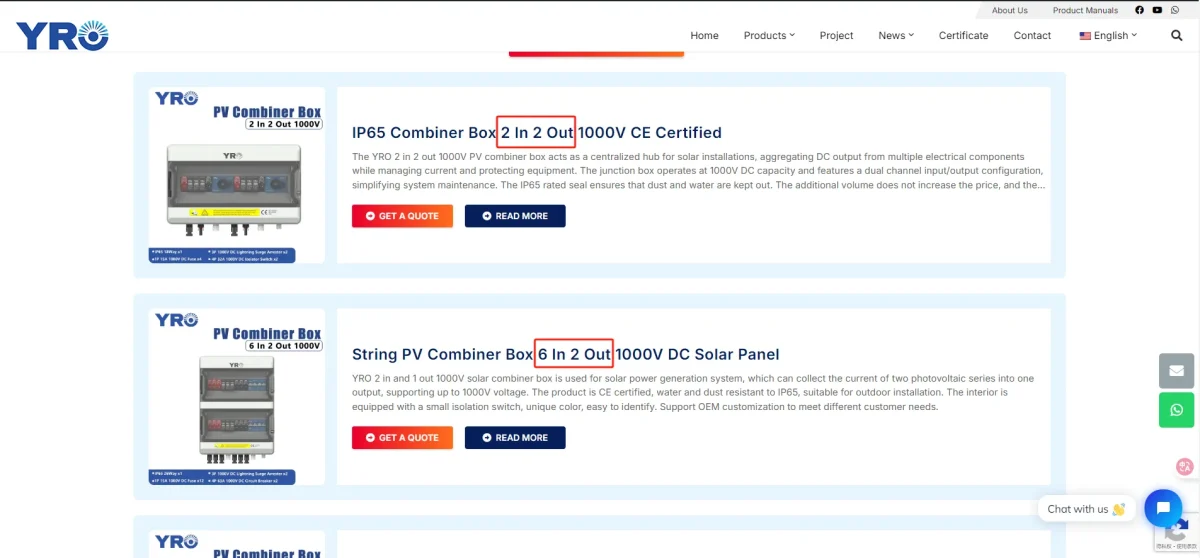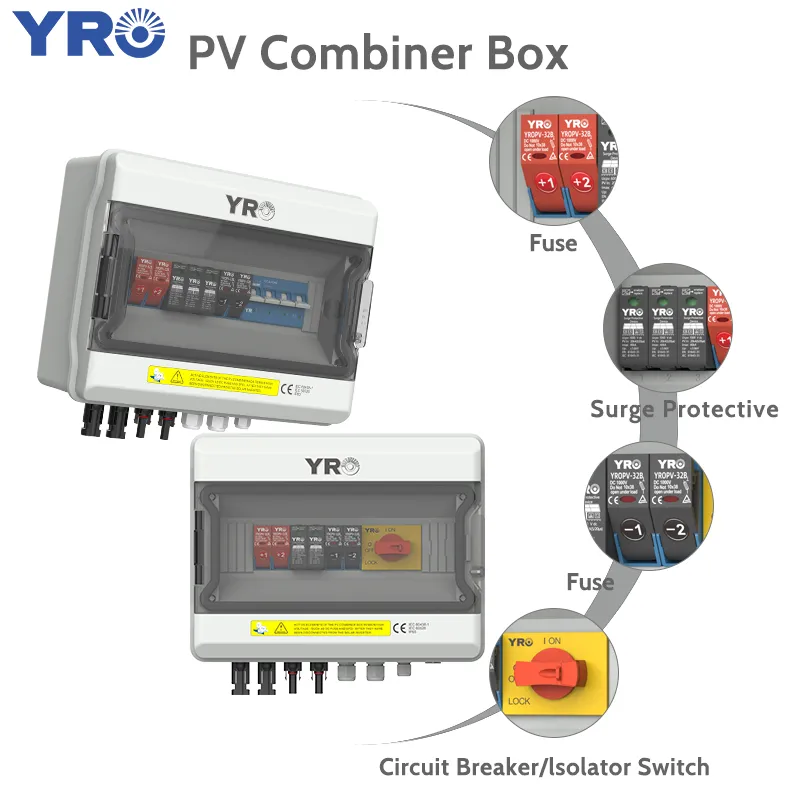Depending on the quality of the components, installation techniques, environmental conditions, and routine maintenance, the overall lifespan of a solar system can reach 20 years. However, potential risks such as electrical faults, overheating, and fire hazards can accelerate the loss of your investment. A solar combiner box ensures efficient and safe system operation by consolidating electrical currents.
A solar combiner box gathers and channels energy from multiple solar panel arrays, using safety devices like fuses or breakers to prevent overloads, adding surge blockers to handle sudden power spikes, and offering optional tracking features—all working together to boost protection, reduce tangled cables, and keep the system running smoothly.
What Are the Benefits of a Solar Combiner Box?
1. Centralized current management, optimizing system efficiency
- Multi-input consolidation: Combines the output of multiple solar panel strings into a single circuit, reducing the number and length of cables and minimizing line resistance losses (typically reducing power loss by 5-10%).
- Simplified wiring: Avoids the need for each string to connect individually to the inverter, significantly streamlining system architecture and reducing installation complexity.
2. Multiple electrical protections, enhancing system safety
- Overcurrent protection: Built-in DC fuses or circuit breakers,automatically cut off faulty circuits in case of a short circuit or overload in any string, preventing fire risks.
- Lightning and surge protection: Integrated SPD (surge protection device) effectively counters lightning strikes or grid fluctuations, safeguarding inverters and panels from highvoltage surges.
- Water and dust resistance: IP65 protection rating ensures longterm outdoor stability (especially suitable for harsh environments like deserts and coastal areas).
3. Reduced maintenance costs and time
Fault troubleshooting only requires checking the corresponding components inside the combiner box for solar panels, eliminating the need to inspect each line individually, thus saving maintenance time.
 How Does a Combiner Box Simplify PV Array Wiring?
How Does a Combiner Box Simplify PV Array Wiring?
1. String consolidation mechanism
The solar combiner box allows multiple PV string inputs to be merged into a single circuit output. The common “n-in, y-out” configuration means consolidating n string outputs into y string outputs. For example, a 6-in, 2-out setup merges six input strings into two output strings.

2. Reduced total cable length
Solar array combiner are typically installed near the PV array, significantly reducing the total cable length by shortening the distance from the strings to the consolidation point.
3. Standardized interface layout
The interior of the solar junction box adopts modular terminal blocks or plug and play connectors, standardizing the positive and negative terminal specifications for each string. Examples:
Each circuit is equipped with solar connectors to prevent poor contact caused by manual wire stripping.
Copper busbars centralize components, reducing the number of soldered or crimped connections.
4. Compatibility with different voltage levels
Supports wide voltage input, allowing the mixing of strings with different voltages (requires isolated circuits). For example:
600V and 1000V strings can be merged via voltage divider circuits inside the distribution box, reducing the need for separate inverters due to voltage differences.
Conclusion
Photovoltaic combiner boxes ensure equipment safety and improve system reliability. When selecting a model, consider the number of components, environmental conditions, and monitoring needs to ensure stable operation for decades to come.

 How Does a Combiner Box Simplify PV Array Wiring?
How Does a Combiner Box Simplify PV Array Wiring?